
|   |

|   |
 e-mail: sunilkothari1933@gmail.com Assam Diary Sri Sri Madhavdev Award, visit to Narayanpur and Sri Sri Madhavdev's Sattra October 13, 2019 When I received the news from the Department of Culture, Govt. of Assam that I had been selected for Sri Sri Madhavdev Award for the year 2019, I was delighted. This award is similar to Sri Sri Sankardev Award which is given for contribution to Assamese culture in particular and culture in general. It is the highest award given by the Govt. of Assam and is a national award. It carries a purse of Rs. 3 lakhs, a citation and a shawl. This award has been instituted only recently. The venue for conferring the award was Narayanpur, the birthplace of Sri Sri Madhavdev. It was to be given by the Chief Minsiter Sri Sarbanand Sonowal. The invitation letter mentioned that the awardee will be the State Guest and all arrangements for travel, accommodation, visiting Sattra of Sri Sri Madhavdev, meeting with the CM etc., would be arranged. Arriving on 22nd September, I was received traditionally with Assamese Gamocha (scarf) by the officer from Dept. of Culture along with my friend Samar Sarmah at the Guwahati airport. It has been refurnished and when one arrives one sees the large scale masks of Nrusimha avatara and various other characters at the entrance. They are titled as Majuli vignettes, as the Sattra which has specialized in mask making is on Majuli Island known as Chamguri Sattra. We were taken for lunch at Sattriya dancer Anita Sharma's place from where around 2pm, I was to leave by a car with one Sattriya dancer for Biswanath village from where we were to go to Narayanpur next morning. I had stayed with Anita and her husband Samar during my research work on Sattriya and it has since then become my second home in Guwahati. Guru Jatin Goswami's Sattriya Akademi is nearby, where he stays. During my stay for research work on Sattriya, I used to visit Guruji often for guidance and we worked on an article on Mati Akhara, the physical exercises. Anita's residence had become a meeting point for dancers and scholars. Though I had travelled by car in the past from Guwahati to Jorhat and also to Tezpur, this time it appeared that the journey was quite strenuous on account of poor conditions of roads and heavy rains. Normally we could have reached within six hours. But it took more than eight hours to reach Biswanath. There too, the District Officer received me with Assamese Gamocha. He alerted me to leave after breakfast around 7am in order to reach Narayanpur by 11am. The Sattriya dancer accompanying me had to reach there earlier as he had to rehearse Bargeet to be rendered as a part of the ceremony at Narayanpur. After good rest in a well appointed guest house, we left by 8am. The District Officer was right. We encountered such bad roads that our car could not gather speed. The distance was not too long, but the pace at which we were travelling was quite slow. The bumps on the way almost broke my back. It took us nearly five hours to finally arrive at Narayanpur. Our stay was arranged at the guest house where several government officers were stationed for the visit of the CM. Reaching Narayanpur The local District Officer also received me with Assamese Gamocha. By the time we arrived it was almost 12 noon. I was introduced to a young bright MP, who knew how to deliver politically correct speech. The special person appointed to look after me was formerly in defence service and was transferred to cultural department. He would report to me with a salute and in 'attention' pose. I was quite surprised but he said it was a protocol. I met Janardan Goswami, Sattradhikar of Uttar Kamalabari Sattra on Majuli Island. Avinash Pasricha, the photographer, Madhavi Puranam, editor of Nartanam, and I had stayed at Uttar Kamalabari Sattra for a fortnight to take photographs of various Sattras on Majuli Island. Janardan Goswami looked after us very well and arranged for several sessions of photographs including personally supervising the physical exercises, Mati Akharas. We recalled happy memories of our stay. Monks with cell phones There is an interesting story which he narrated to all assembled officers including Sudarshan Thakur, director of Sankardev Kalakshetra. During my last visit to Kamalabari Sattra, I was bitten by a stray dog when I was returning from the rest room around 3am. On learning about it, Janardan Goswami had immediately arranged for some medical treatment, applying leaves of a particular tree. I had photographed some of the inmates staying there using cell phones. Janardan Goswami used it to inform a doctor at Jorhat about this mishap. The earliest boat plying between Nimai Ghat and Majuli Island was at 7am. I was to stop over at Jorhat by 9 or 10am along with one of the inmates, known as bhagat, at a doctor's dispensary. Accordingly, I was sent to Jorhat and waited for the doctor. Around 11am the doctor arrived. He looked at my leg where the dog had bitten me. He attended to the wound, then drew a chart of injections which I had to take at an interval of few days. The total injections I had to take were five. And the fifth one was to be taken in London, where I was with Ratan Thiyam at Barbican Centre where we were to stage his play Uttar Priyadarshi. It so happened that the last injection which I had taken from New Delhi was not accepted by the hospital in London. The one which the doctor at the hospital was to administer was quite expensive. By good luck, an Indian acquaintance of mine who was a doctor there helped me. He said it was OK to use the one which was sterilized and he administered that! When we arrived at Jorhat by 10am, one of the bhagats telephoned Samar at Guwahati, and the celebrated Sattriya exponent Sharodi Saikia at Dibrugarh where she had gone for a conference. And within no time, all my dancer friends came to know about the mishap! While Janardan Goswami and the rest of the company were amused by the incident, Goswami also implied the passion I had to still continue my research. From Mists of Majuli Island The doctor at Jorhat, after the treatment, took me for lunch at a local friend's residence. He knew me by my writings. He arranged a car for me to go to Guwahati. But the most important gift I received from him was a DVD of a film titled 'In the Mist of Majuli', a documentary film made by a French woman film maker. It is a rare film which shows a journey made by a French woman who visits Uttar Kamalabari Sattra and shows the morning prayers, the lifestyle of bhagats in Sattra, how often the orphan children are left at the gate of the Sattra, the spacious Namghar, the Manikut on which the sacred book of Srimad Bhagavata is placed for worship, the prayers, performances of dance-dramas, Rasalilas and the daily routine at Sattra. It is a rare film, which I have screened several times at several places within India and abroad. Preparation for visiting the venue Janardan Goswami ordered a dhoti for me and one of the bhagats tied it for me in a traditional manner. I think I was being made presentable for the award! I had not expected the venue to be so grand with more than 5000 strong audience waiting patiently. Large hangars which we see at the airport were used to accommodate the audience. The two hangars, side by side were decorated. The public was seated there. There were still many standing on the side holding umbrellas as it was drizzling. I learnt that our award ceremony was along with the inauguration of the new university named after Sri Madhavdev at Narayanpur. Janardan Goswami and one young man Sudarshan Thakur, who was recently appointed as a Director of Sankardev Kalakshetra, kept us company. The arrival of the CM accompanied by some officers was delayed on account of their helicopter being caught up in a storm. Luckily the pilot was able to take control and they were all saved to the great relief of everybody. Once the CM arrived, number of security guards took hold of the vast dais, where more than sixteen chairs were placed; behind was a large backdrop announcing the award ceremony. In a corner was a huge brass lamp to be lit by the dignitaries. The Master of Ceremony led me and senior Sattradhikar 93 year old Sri Yugadananda Chandra Goswami of Sri Mayamore Dinjoy Sattra, awardee for the year 2016, to our seats. We saw a sea of people waiting patiently to watch the ceremony. After the award was given, we spoke briefly about the contribution we have made to the culture and offered our prayers to Sri Sankardev and Sri Madhavdev. We were given a huge traditional brass sarai, a shawl, the big framed citation in both Assamese and English languages, and the cheque. The CM Sarbanand Sonowal inaugurated the Madhavpur University and laid out before the public, various activities the Govt. has launched for education and other fields. He is an excellent speaker and I could see how he kept the large audience in thrall. As a dynamic minister wanting to serve the people and lead Assam to the path of progress, his speech was politically appropriate. Several TV channels wanted to interview us. Yugadananda Chandra Goswami was excited and spoke a lot about the contribution of Sattra and how religion has kept all Assamese united. He spoke in Assamese at length and there was little time for me to say anything on Sattras and the great institution it is where classical Sattriya dances are nurtured, and how the dances had received the recognition in 2000 as the eighth classical dance style. Sitting for delayed lunch with the CM, he talked about what further assistance the Govt was according to the Sattras. I presented him my Marg book on Sattriya dances, which he looked through carefully, marveling at my visit to Kamalabari Sattra in 1966. Very few people outside Assam knew about Sattriya dances. I had mentioned in my speech about how Dr Maheswar Neog, the great scholar and Indologist had brought to All India Dances Seminar at Vigyan Bhavan in New Delhi in April 1958, for the first time few senior most monks like Maniram Dutt Muktiyar and Maniram Muktiyar Gayan, and presented some young monks in brief performances, after he had read papers on Sattriya dances and referring to Shubhankar Kavi's text on Sri Hastamuktavali. The young director Sudarshan Thakur and Janardan Goswami were keen that the CM start a branch of Sankardev Kalakshetra in New Delhi to focus attention on Sattriya culture and allied arts. The CM responded positively. Janardan Goswami invited me to see in the evening the Sattra established by Sri Sri Madhavdev, and this indeed was a pilgrimage. He also invited me to Uttar Kamalabari Sattra in November to attend Rasalila performances on the occasion of Sri Sri Sankardev's birthday celebrations. After the CM and others left, my protocol officer and security guard by name Anshuman escorted me in a special car to Madhavdev's Sattra. The way from Guwahati by car had been so tortuous, I had almost arrived in a stretcher to receive the award! Slide show 
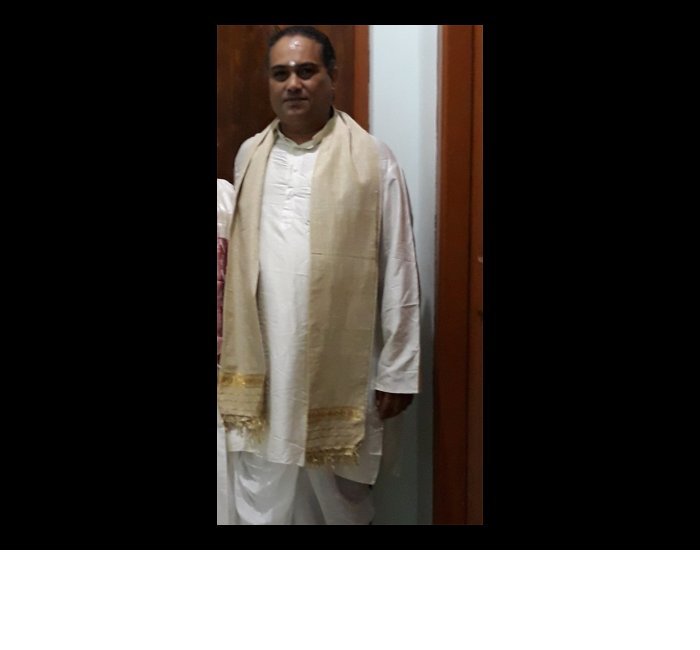
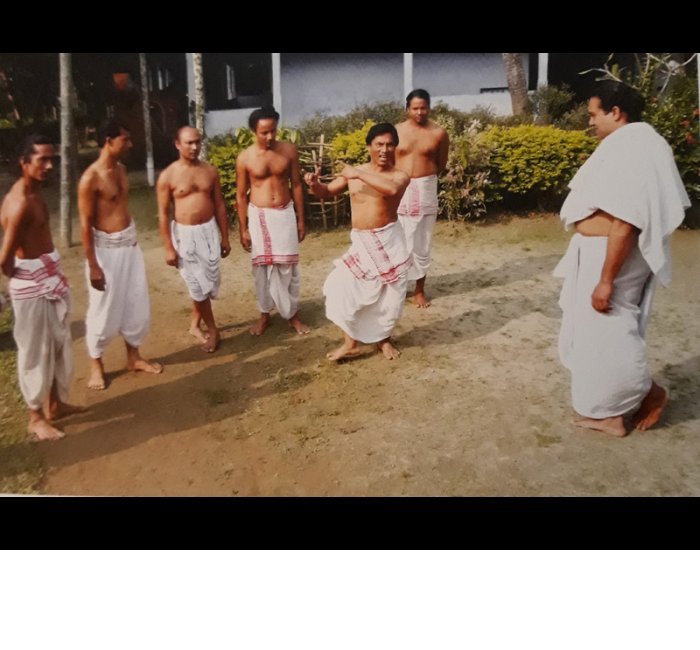
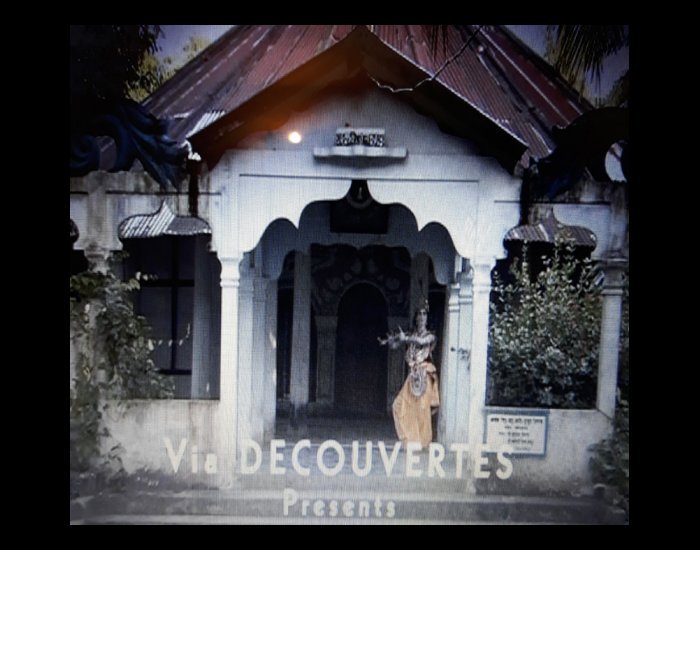

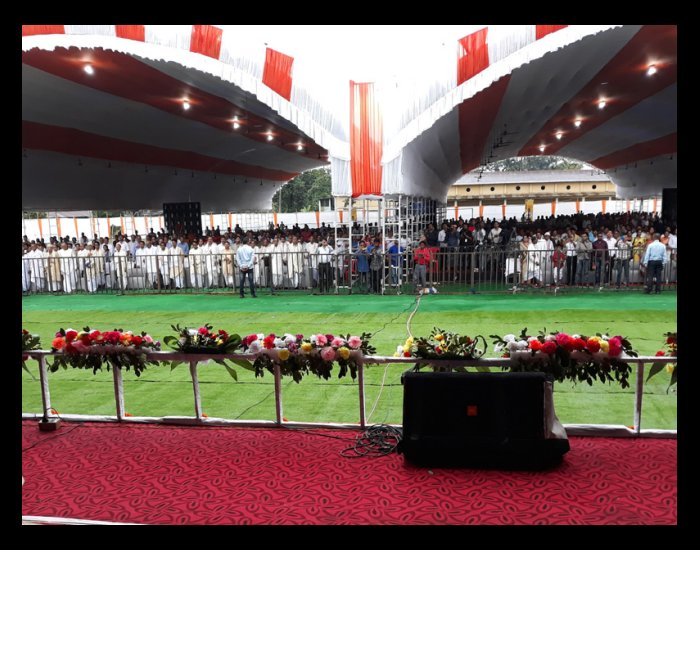
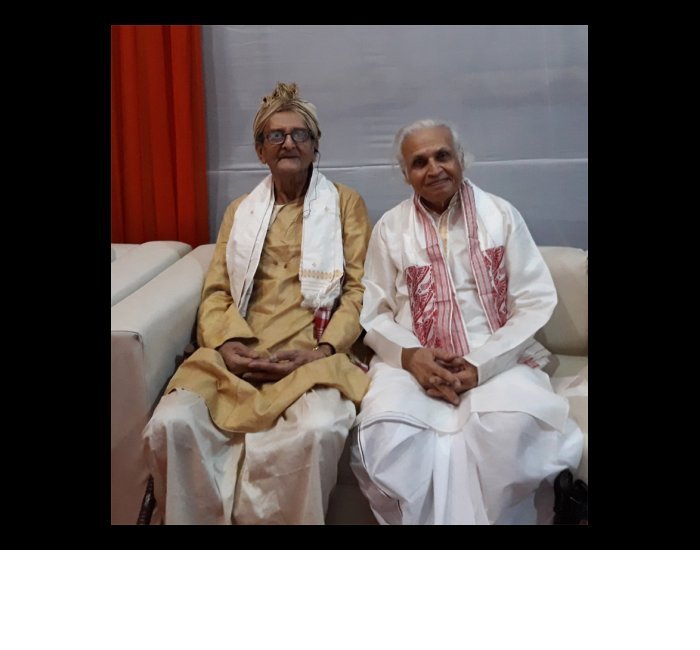
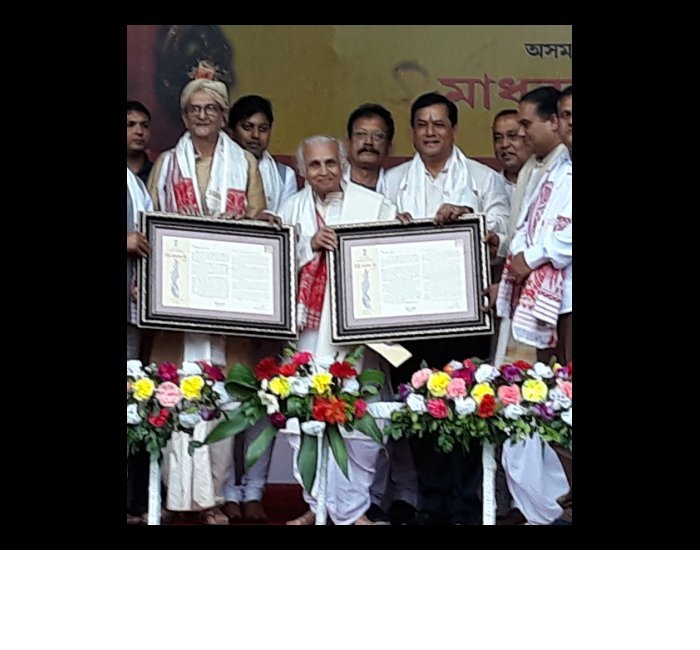
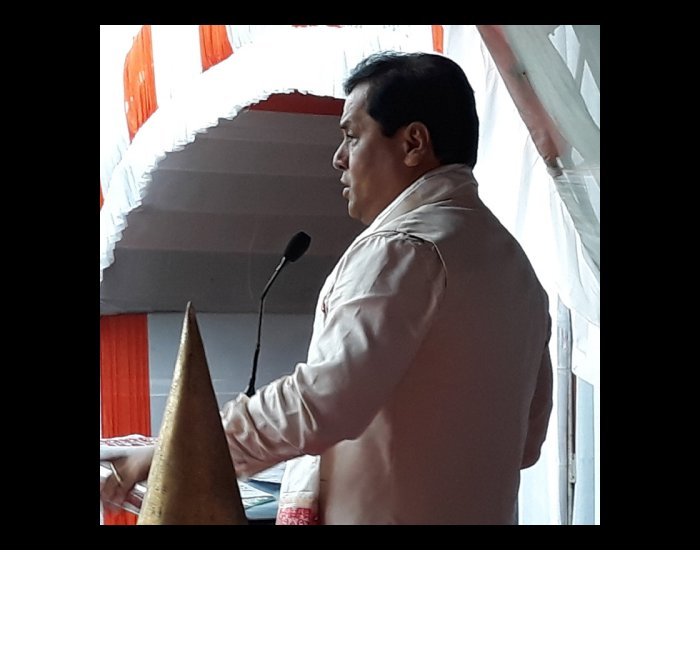
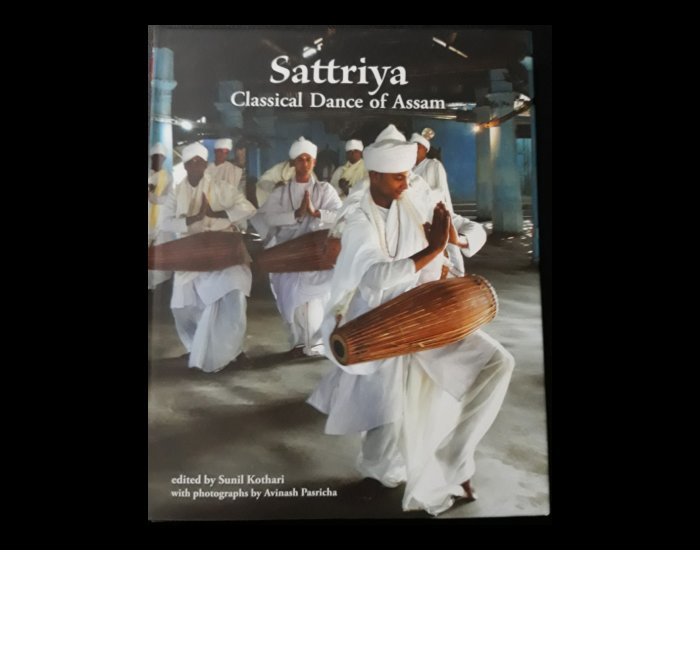
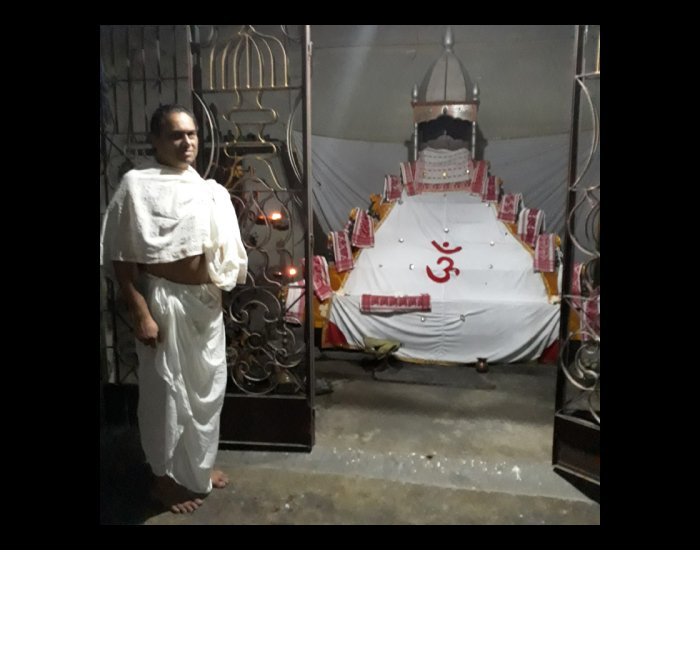
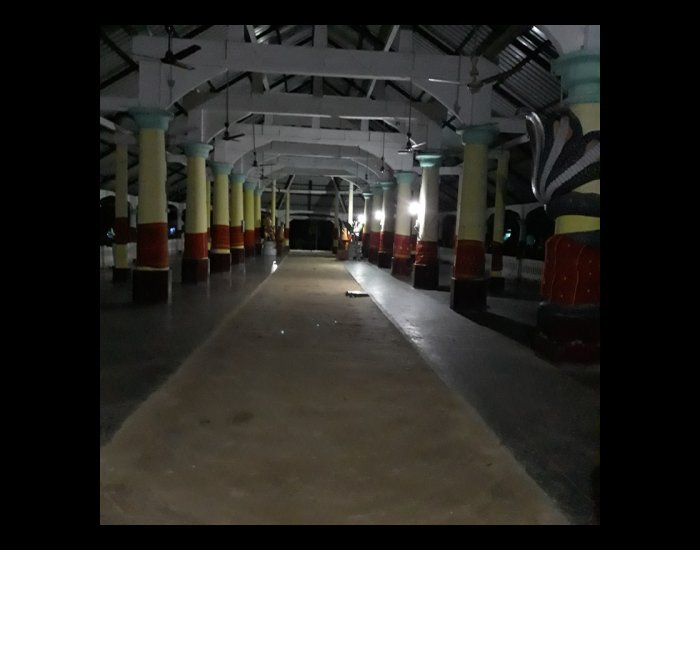
Sri Sri Madhavdev (1489-1596) Sri Sri Madhavdev was an important preceptor of the Ekasarana Dharma, known for his loyalty to his Guru Srimanta Sankardev as well as his artistic brilliance. Initially Madhavdev was a sakta worshipper, but he was converted to Ekasarana Dharma by Sankardev and he became his most prominent disciple, He became the religious as well as artistic successor of Sankardev after his death in 1568. Madhavdev is known particularly for his book of hymns Naam Ghosa as well as his large selection of songs, Bargeets. In his early life, Madhavdev had suffered a lot. A severe famine had occurred and the family had to move from place to place. Finally they settled in Banduka. There Madhavdev studied Tantra Sastra and literature on Saktism. After his father passed away he engaged himself in trading of betel leaf and areca nut with his brother-in-law. In order to save his mother from illness, he wanted to sacrifice two goats. But his brother-in-law, who had adopted Sankardev's Ekasarana Dharma, did not permit to sacrifice goats. Instead he took him to Sankardev, with whom there took place a dialogue for more than four hours. Sankardev recited a sloka from Srimad Bhagavata purana and after that Madhavdev was convinced and accepted to become Sankaradev's disciple. His conversion occurred in 1532. Then Madhavdev broke his betrothal and decided to lead a life of a celibate, preaching teachings of Sankardev. Among his literary works, Naam Ghosa also known as a book of 1000 couplets, was translated as Divine Verses by Saroj Kumar Dutta in 1997. Another well known work is Bhakti Ratnavali. His one act plays are known as Jhumura. He wrote a one act play Janma Rahasya about creation and destruction of the world. Besides Naam Malika, his rendering of Adi Kavi Valmiki's Adi Kand is well known. Guru Bhatima, in praise of Sankardev and his composing third chapter of Kirtana Ghosa of Sankardev are much valued as two parts composed by Sankardev were lost. Madhavdev earned title of Mahapurusha for his services to preachings of Sankardev. He passed away in 1596 at Madhupur Sattra in Kooch Bihar. Much venerated, Madhavdev's memories are further celebrated in terms of establishing a university in his name at Narayanpur. We visited Madhavdev's Sattra and one more Sattra. It was dark but within the available light we could see the space was great; we could see Naam Ghar and Manikut on which sacred text of Srimad Bhagavata is placed. In another Sattra, we met an elderly bhagat who was 105 year old. He leads his life in worship of Srimad Bhagavata purana and follows daily rituals. One was impressed seeing his devotion and leading life with complete surrender to the Lord. After visiting these Sattras, Janardan Goswami arranged for us to go by the main road to Dibrugarh by sending two bhagats from the Sattra in order to avoid long route. They directed us on how to go first to Lakhimpur and then proceed to Dibrugarh. On way to Dibrugarh Since from Dibrugarh there was a direct flight to Guwahati, it was decided to bring me to Guwahati by air. The arrangements were made for our overnight stay at Dibrugarh University Guest House. It took more time than expected; because of the rains, the driver had to drive at a slow speed. I was curious about the 8km long bridge which is now ready on Brahmaputra river. It has served as a great relief for people as now the problem of crossing river to other side by boat, steam launch which took a lot of time, has been resolved. Four years ago I had visited Dibrugarh for an international conference on Sattriya dance. And I was taken to the site where the bridge was being built. Indeed it is a blessing, and thanks to technological advances that such a large bridge was built on an astronomical budget. The Dibrugarh University Guest House is well maintained and extremely clean. Most of the time the guest houses are not maintained well. But the guest houses in Assam have been well kept which was a pleasant surprise and a relief. Though it took more than four hours, once we reached the Guest House we felt relieved, but the nonstop rain caused some anxiety. I recalled when I had heard the name Dibrugarh for the first time. In 1950, the earthquake had taken place. I had appeared for SSC examination. The knowledge of a State like Assam was minimal. The North East part of India was then not easily accessible. There is also a railway line between Dibrugarh and Guwahati. But now it is connected by air, therefore the communication and access are much easier than earlier. Our flight was around two and though we had started really early, we did not expect the roads to be flooded. Several roads leading to the airport were closed and traffic was diverted by longer routes. Since the protocol officer had all the connections with the police stationed at various junctions, we were allowed to travel by a longer route. However speedily the driver drove the car, I realized that we would not make it in time. The officer made fresh flight booking for the next day. He put me up at State Guest House which is nearer to the airport. While returning from the airport, he called his in-laws and arranged for our lunch. His teacher who taught him percussion had come to see us especially as he was interested in Sattriya dance. Since Madhavdev Award was covered widely by English and Assamese newspapers, he knew about the award. To my surprise he said that he had attended the international conference on Sattriya and had seen me there. He is also known as a sculptor who prepares in wood, excellent small temples with perfect architectural details. The officer's father-in-law also was expert in sculpting wooden temples and other architectural wonders. It was indeed a pleasure to spend time with them. Few important issues about Sattriya dances I had raised a question to them and also spoken with former Director of the Cultural Department, Swapnanil Barua, Anita Sharma and Samar, how come after getting recognition as 8th classical dance style, from 2000 till 2019 almost for twenty years, not a single non-Assamese dancer had taken to Sattriya dances. When the dances were discovered, Indrani Rahaman and Ritha Devi had learnt two or three items only. Jatin Goswami and Raseshwar Saikia had taught them. But both of them opted for Odissi and did not study Sattriya further. There is only one dancer in Maharashtra by name Deepika at Pune who studying dance at The Lalit Kala Kendra, Pune University, has studied Sattriya. But I do not know if she is a Maharashtrian and a non-Assamese. Prateesha Suresh in Mumbai performs Sattriya, but no other non-Assamese dancer is learning Sattriya. Jhelum Paranjape and one or two Bharatanatyam dancers have performed Bargeet in Bharatanatyam style but they do not perform Sattriya. In other forms like Odissi, Kuchipudi or Mohiniattam some of the leading dancers are Gujaratis and Maharashtrians, even Punjabis and foreigners like Ileana Citaristi, an Italian, and Sharon Lowen, an American. Bhabananda Barbayan's role in spreading Sattriya dance Bhabananda Barbayan is in Delhi at Jawahar Bhavan and is teaching Sattriya but even in his case, no Punjabi or any South Indian dancer has taken to Sattriya. Bhabananda has trained foreign dancers in France and Mexico. He has succeeded in getting Ram Vijay Naat and Parijat Haran Naat staged in French and its translations in English. One play is even being staged in Japanese language. Both are published by Sankardev Kalakshetra, compiled and edited by Surya Hazarika, Chairman of Sankardev Kalakshetra. However, it is heartening to learn that Sattriya Naat, dance-dramas written by Srimanta Sankardev has become internationally well known. Recently Bhabananda has choreographed Mahakavi Kalidasa's Shakuntalam Natak in Brajbuli and most of the dancers/actors are from Jawaharlal Nehru University, students Assamese and also non-Assamese. It is to be staged at JNU on 19th October this year. This activity is most welcome. But I do feel that it is high time Sattriya be performed professionally by non-Assamese dancers as are other classical dance forms. On returning to Guwahati we had celebrations at Anita and Samar's residence when leading Bihu dancer and musician, sang songs and impromptu performed Bihu. Swapnanil Barua played harmonium and sang Bargeets and also songs of Bhupen Hazarika. It was a memorable evening for me to have received so much affection and love from friends in Assam.  Dr. Sunil Kothari is a dance historian, scholar, author and critic, Padma Shri awardee and fellow, Sangeet Natak Akademi. Dance Critics' Association, New York, has honoured him with Lifetime Achievement award. Post your comments Please provide your name and email id when you use the Anonymous profile in the blog to post a comment. All appropriate comments posted with name and email id in the blog will also be featured in the site. |